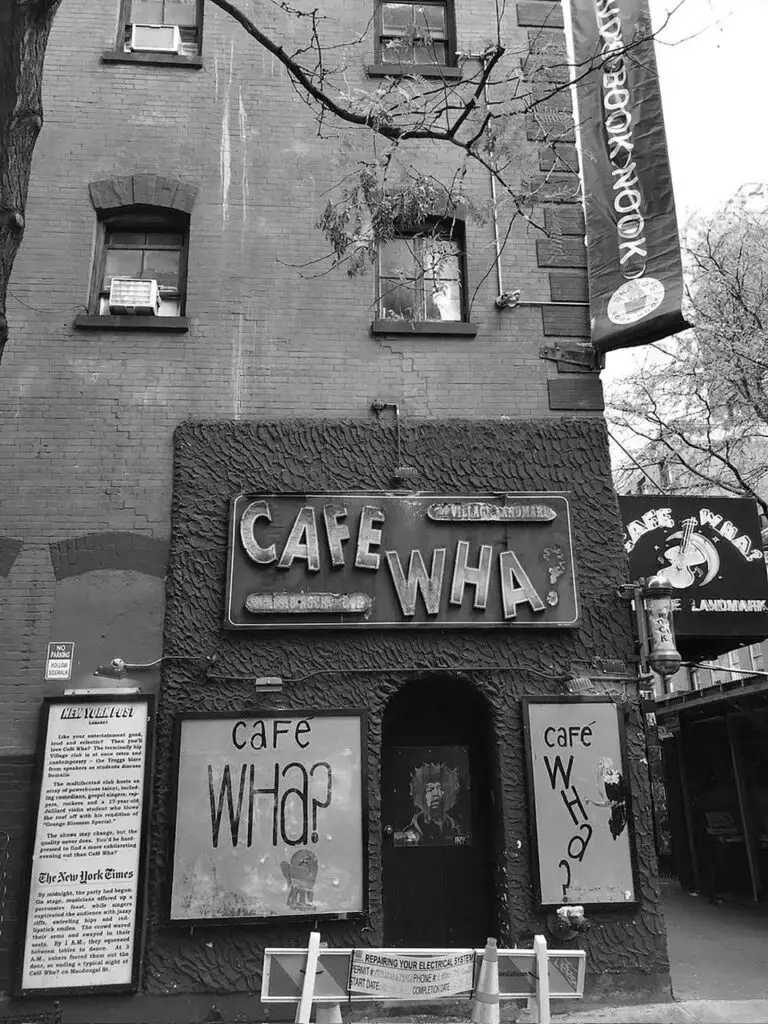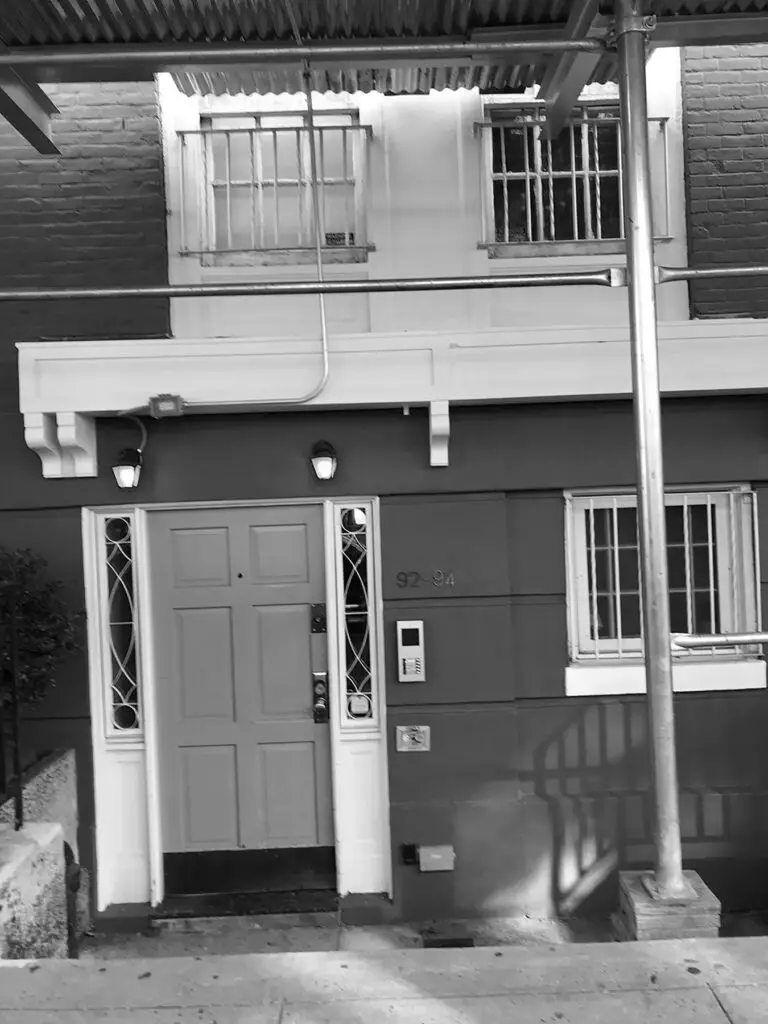Ever wonder what it would be like to retrace the footsteps of Bob Dylan during his time in New York? To travel to the venues where he performed, wrote classic tunes, and crashed during his early years in the Big Apple? Now you can with Bob Dylan’s New York: A Historic Guide (Excelsior Editions/SUNY Press).
While there have been many great books about the cultural history of Greenwich Village, none has focused so sharply on the role it played in the life of rock and folk’s most esteemed songwriter. Now Dick Weissman, a onetime musician turned college professor who traveled in Dylan’s circles early in his career, has written a compact guidebook that brings the songwriter’s days and nights in New York, especially in his early years, to life. And while his book contains some welcome detours, like a discussion of Dylan’s time in Woodstock, the heart of the sites and stories lies in Greenwich Village, that perennial capital of Bohemian art and progressive lifestyles.
As for me, I was especially interested in Weissman’s book for three reasons.
Firstly, I came of age during my late high school and college years in the late ‘70s, working at a famous Greenwich Village landmark, Bigelow Pharmacy. Located in the heart of the West Village on Sixth Avenue and Eighth Street, many of the patrons who came in were musicians. In addition to handling stock and working the register, I was occasionally tasked with delivering medicine to musicians like Led Zeppelin and the Rolling Stones, who were recording around the corner at Electric Lady Studios. The second reason I was interested in the book is my own experience, creating and running in the early ‘90s with legendary rock manager/publicist/journalist Danny Fields, the first-ever Rock-N-Roll Bus Tour of New York. (Click the link to check out a story about it in The New York Times.). Finally, as a present-day resident of Woodstock, I live a stone’s throw from Dylan’s and the Band’s legendary Big Pink and many of the other landmarks Weissman covers in his chapter on Dylan’s time in Woodstock. (Click for our feature about it)
Weissman’s tour naturally begins on MacDougal Street, profiling 15 essential landmarks. At #105, there’s the former site of The Commons Coffeehouse, where Dylan, along with Tiny Tim and a pre-Sopranos’ Uncle Junior (actor/singer Dominic Chianese), played for “basket money.” And according to singer David Blue, it’s the site where Dylan began writing “Blowin’ in the Wind” in April 1962. At #110 is the former site of The Folklore Center, a gathering spot where Dylan’s earliest champion, Izzy Young, held court and collected mail that touring folkies could pick up while swinging through town. Another key gathering spot, The Kettle Fish, was at #114, right next to the all-important Gaslight Café. Opened by John Mitchell in 1958, this basement club presented Beat poets like Kerouac, comedians like Bill Cosby, and a multitude of early performances by Joni Mitchell, Richie Havens, and, of course, Dylan. It’s where the finger snap was created to reward outstanding performances without bothering the upstairs neighbors of this basement hovel with handclaps. The club was recreated for both the TV series The Marvelous Mrs. Maisel and the Coen Brothers’ extraordinary film Inside Llewyn Davis. From 1986 to 1995, it was The Scrap Bar, a heavy rock club which this writer had the pleasure of playing.

Weissman’s MacDougal sojourn also includes The Café Wha? and Caffé Reggio. The former, opened by David Lee Roth’s uncle Manny Roth, was the first place Dylan performed the night he arrived in New York on January 24, 1961. It is also the venue where Jimi Hendrix would be “discovered” by Chas Chandler. At #119, Caffé Reggio reportedly features the first espresso machine in America, purchased in 1927 by owner Domenico Parisi. This classic café continues to fuel the dreams and energy of many of NYC’s creatives and tourists and has been featured in a multitude of films, like The Godfather. At #94 is the townhouse where Dylan lived in 1970, after being hassled by fans during his time in Woodstock. With obsessive fans like the legendary A.J. Weberman picking through his trash, Bob split the townhouse for Southern California in 1973.
Weissman’s chapter on Bleeker Street features a bevy of important Dylan landmarks, especially some of the most important clubs of the era. At #147, there is the still-going strong Bitter End, and at #152, the former site of the Café Au Go Go, where Lenny Bruce was arrested for obscenity. At #157, it details the former site of Kenny’s Castaways. From 1976 to 2012, this club featured a wide range of folks that Dylan would come to check out, from one of the first performances by Bruce Springsteen to the debut of Yoko Ono’s band to local bands. At #158 was the Village Gate, which hosted jazz greats like Miles, Monk, and John Coltrane. Weissman relates a funny story of Trane launching into a lengthy version of “My Favorite Things,” oblivious to the manager flashing the lights to signal that it’s closing time. We also hear about the famous Matt Umanov Guitar Shop, where Dylan bought and repaired instruments, and Zito’s Bakery, where he and his then-girlfriend, Suzy Rotolo, would get fresh bread out of the oven in the early morning hours after gigs.
Weissman’s journey continues North and West to the famed fountain at Washington Square Park, where Dylan and contemporaries like John Sebastian, Maria Muldaur, Artie and Happy Traum would play on Sunday afternoons. At #106, West Third Street, he takes us to the former site of the Café Bizarre, which, according to folk great Dave Van Ronk, was the first coffeehouse to feature folksingers (it was also the place where Andy Warhol’s crew first encountered the Velvet Underground). The author also provides some fun anecdotes about the legendary The Bottom Line and the night in 1975 when Dylan was invited to jam on harp on stage with blues great Muddy Waters, who introduced him as “John Dylan.”
We get a cold lesson on inflation with a visit to Dylan’s first apartment at 161 West 4th Street, a one-bedroom that Dylan and Rotolo rented for $60 a month in December 1961, which today rents for $4,700 per month. A Dylan tour would not be complete without a discussion of the place where he made his critical bones, Gerde’s Folk City. On April 11, 1961, Dylan was opening for the Greenbriar Boys but gave a performance that generated a rave review in the New York Times by Robert Shelton, one that inspired Columbia Records to come calling.

Weissman’s tour takes us to many more places that shaped not only Dylan’s life but the culture as a whole, from recording studios and the offices of managers and music publishers to hangouts like the Cedar Tavern and The White Horse Tavern to residences like the Chelsea Hotel and The Albert Hotel, where the Lovin’ Spoonful wrote and rehearsed “Do You Believe in Magic?” and John and Michele Phillips wrote the Mamas & the Papas “California Dreamin’.”
In his Woodstock chapter, Weissman discusses the homes Dylan lived in, where he had his famous motorcycle crash, and the former site of Café Espresso. Called “the Café Depresso” by the musicians who frequented it, Dylan lived rent-free on the second floor above the café. It’s the site where he wrote tunes like “It’s Ain’t Me Babe,” “Subterranean Homesick Blues,” and “Mr. Tambourine Man.”
In his final chapter, Weissman reveals the addresses of 50 critical cultural figures who, like Dylan, called Greenwich Village their home for a time – from writers like Henry Miller, Edgar Allan Poe, and Mark Twain to fine artists like Jackson Pollack and Mark Rothko to musicians like Hendrix, Joplin, Lou Reed, Buddy Holly, Barbra Streisand, and many more.
→ Continue reading at NYS Music
